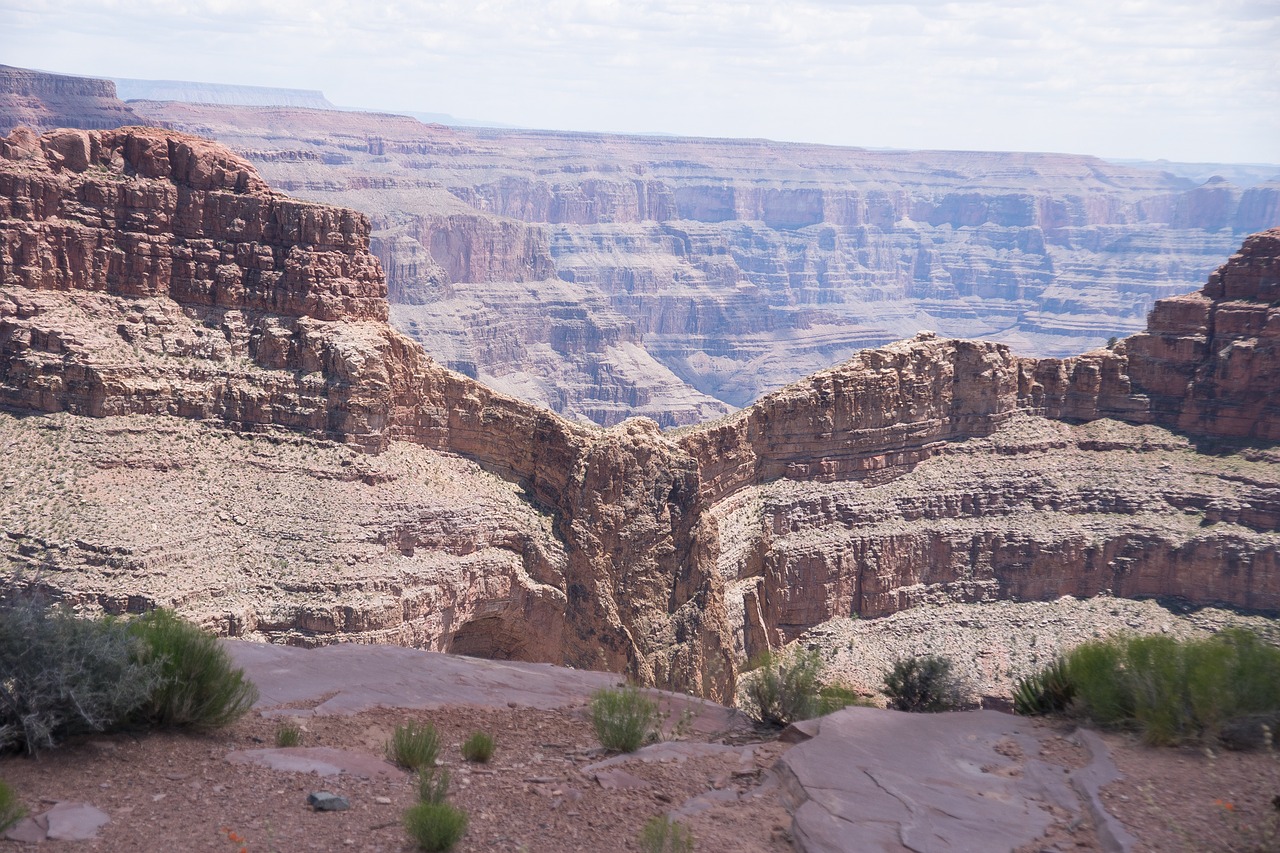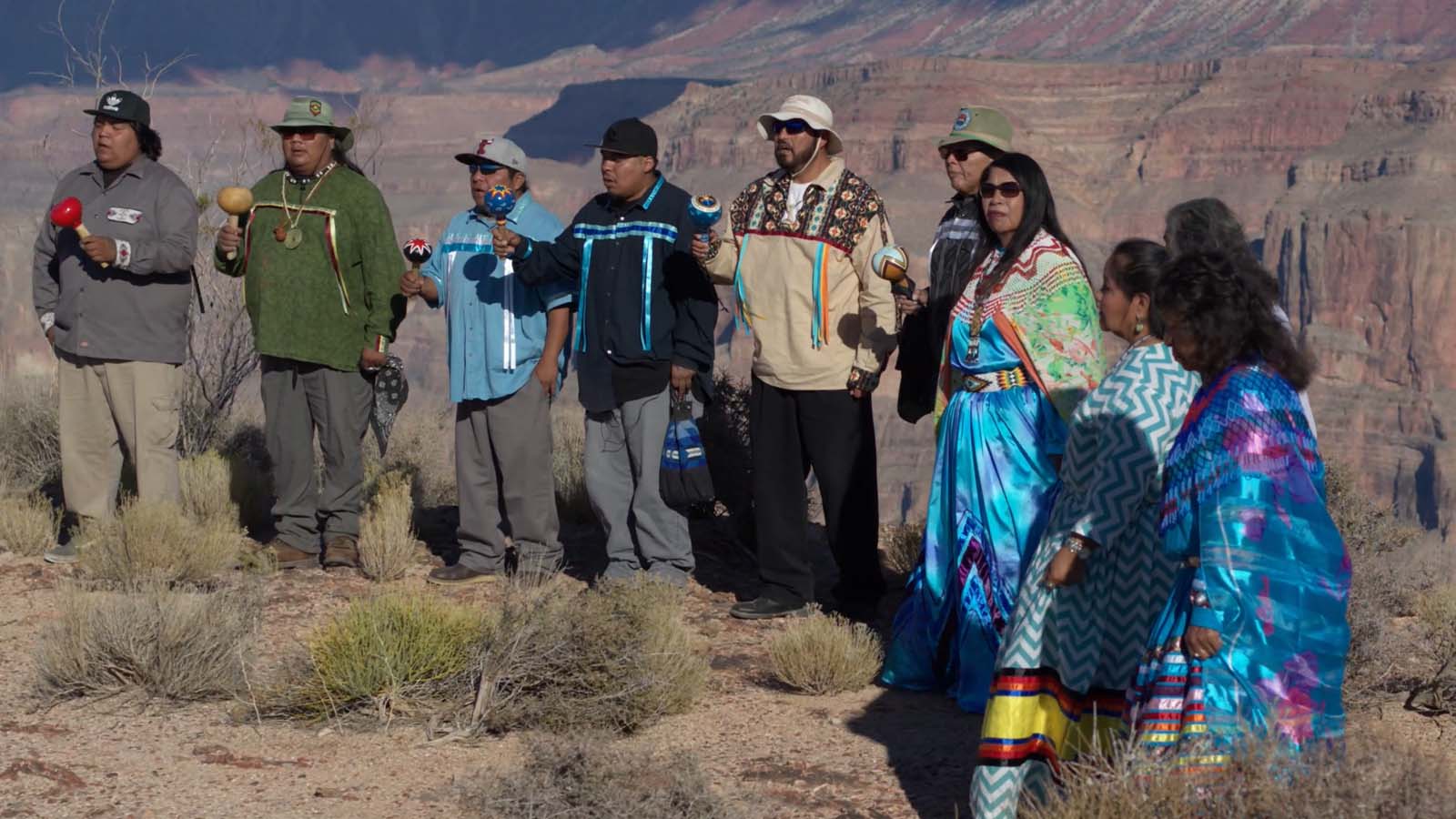Not Just a Tourist Attraction, but a Home
The Grand Canyon: Today

Today, the Grand Canyon is a prime example of a tourist attraction. For a certain amount of money paid to the park you can see the beautiful sight of the Canyon. In 2007, the Skywalk opened to the public. Alongside the sight seeing is the Native tribe, Hualapai, the only tribe that still currently resides in the canyon is included in the experiences. The park includes opportunities to learn more about the tribe as well as lodging outside the park that is marketed as coming with the opportunity to experience "Hualapai hospitality". But the park itself is just a small part of the large reservation that majority of the Hualapai still live on today.
Grand Canyon National Park

The national park recognizes it resides on native land, and through its advertisement it depicts some of the history of the land and people.
Colorado River
The colorado river borders the Hualapai reservation and has a deep connection to their ancestors history.
Grand Canyon Skywalk

In hopes to boost income and employment in the reservation, the tribe joined efforts with a developer to build the Skywalk. In the end the skywalk is a popular attraction today, even with the many hardships and controversies the tribe dealt with during the construction due to a lawsuit, that was eventually settled.
The People
There are currently 2300 Hualapai, including 14 bands (or groups) which all respectfully have their own dialects. Currently a little over 1300 Hualapai still live on the reservation. Hualapai, also meaning "People of the tall pine", were in the most generic sense prime hunters and gathers. With the environment being prime for it, they had bountiful plant growth with native plants such as "Desert tobacco, cane reed, cacti" and many others. When it came to hunting they also excelled, using the migration of various animals, they used this migration pattern to teach the younger generations not only hunting but more about the culture in general. Even when facing many challenges that Indigenous groups faced in history such as the trail of tears, they were able to preserve their language, traditions and beliefs. Alike other tribes, the Hualapai have a deep sense of community, and even today hold close ties with various native neighboring tribes one being the Havasupai.
The Land

Eagle formation in the Grand Canyon
The grand canyon and colorado river as a whole hold a great importance to the Hualapai. Many traditions and beliefs stem from said river. It's described as being a "life-giving source" (5) to them. As Well as a "backbone" (The Hualapai Department of Cultural Resources 5), as it's been their incestrial home since the begining. When the Hualapai, along with many other tribes were forced into the trail of tears, they fought greatly to return to their land. Through many hardships they were able to do so. Still today, they honor this forced journey with something called the Laz Paz Run. Where they make their way through the same trail their ancestors were forced through. Believing that they were made from the clay of the river. In regards to the canyon itself, the Hualapais have a story passed down depicting the importance of it. It is said that long ago the entire canyon was flooded in water. An ice comet had landed and overtime it melted into forcing water to flood the entire canyon. An eagle was said to come down and save all the Hualapai taking them to safety, then when everyone was safe it turned to stone. Today, the eagle can be seen in the mountains.
1874
Relocation of the tribe from there land along the colorado river to La Paz
1883
Hualapai Reservation officially recognized
1938
Constitution and tribal council was formed and approved in order to grow the tribe
1941
Supreme court case, which they won and further confirmed both their tribal and water claims
2003
Tribe and developer come to agreement on Skywalk, and construction begins
2007
Skywalk officially opens
2011
Tribe is sued in a defamation case related to the building of the Skywalk
2014
Case is offcially settled
2014-present
The tribe continues to thrive, of the funding and employment from the Skywalk, National park, and other attractions on their land

Primary source from the Records of the Bureau of Indian Affairs. (Map of the Hualapai, Navajo, and Maqui reservations)

Hualapai Tribe secures water rights from Colorado River for first time
Work Cited
Pearson, Byron. Pacific Historical Review, vol. 81, no. 1, 2012, pp. 97–98. JSTOR, https://doi.org/10.1525/phr.2012.81.1.97. Accessed 19 June 2024.
The Hualapai Department of Cultural Resources. About The Hualapai Nation, https://hualapai-nsn.gov/wp-content/uploads/2011/05/AboutHualapaiBooklet.pdf . Accessed 19 June 2024.
“Visit the Hualapai Indian Reservation Grand Canyon.” Grand Canyon West, 14 June 2024, grandcanyonwest.com/explore/the-hualapai-tribe/.
Map Showing the Location of the Road and the Land Grant of the Atlantic and Pacific Railroad in Arizona; ca. 1883; Central Map File, 1824 - 1960; Records of the Bureau of Indian Affairs, Record Group 75; National Archives at College Park, College Park, MD. [Online Version, https://www.docsteach.org/documents/document/atlantic-pacific-railroad-arizona-map, June 19, 2024]